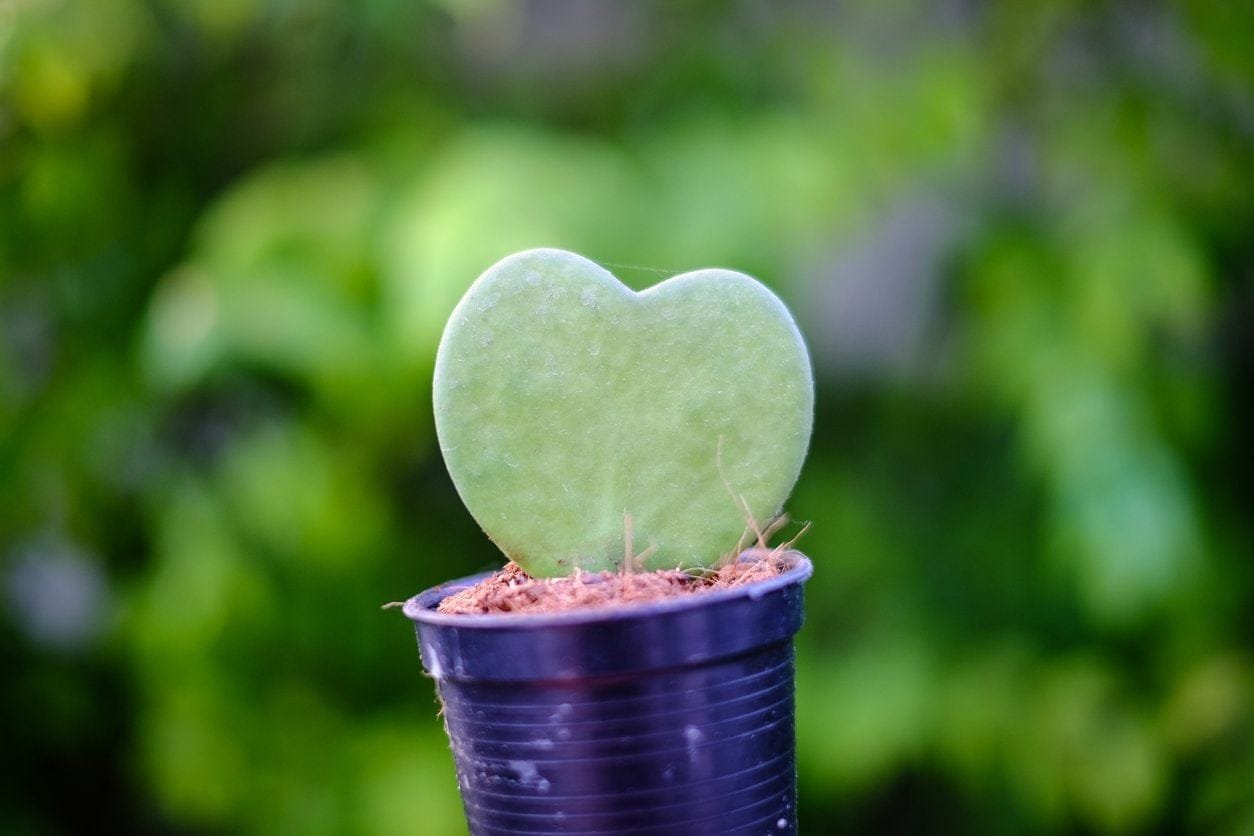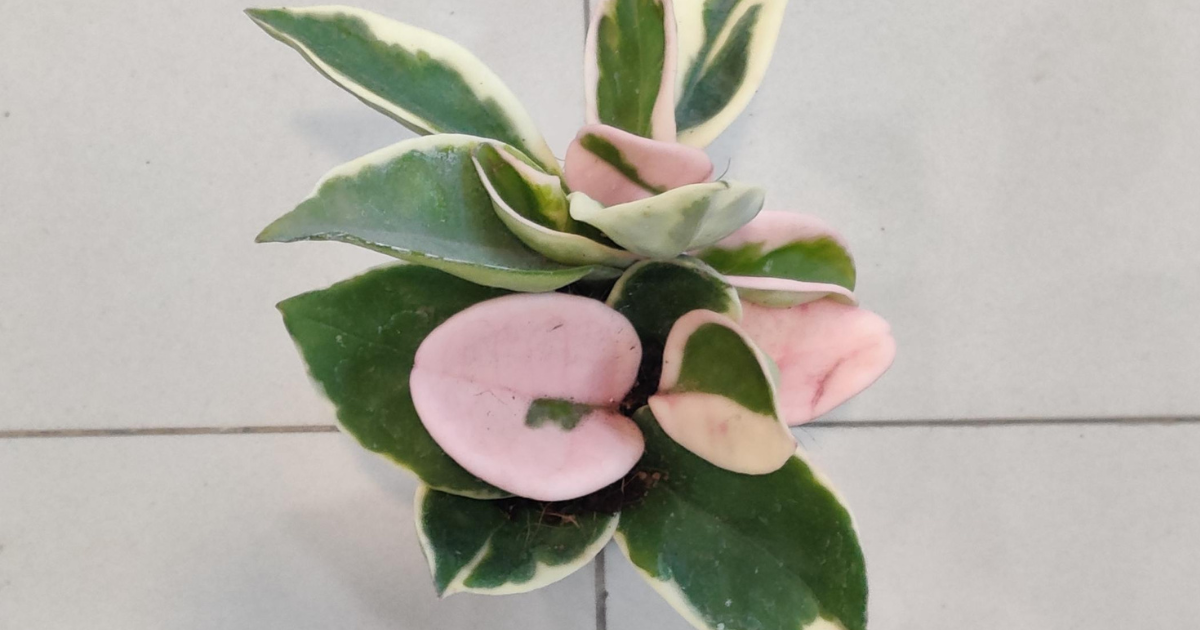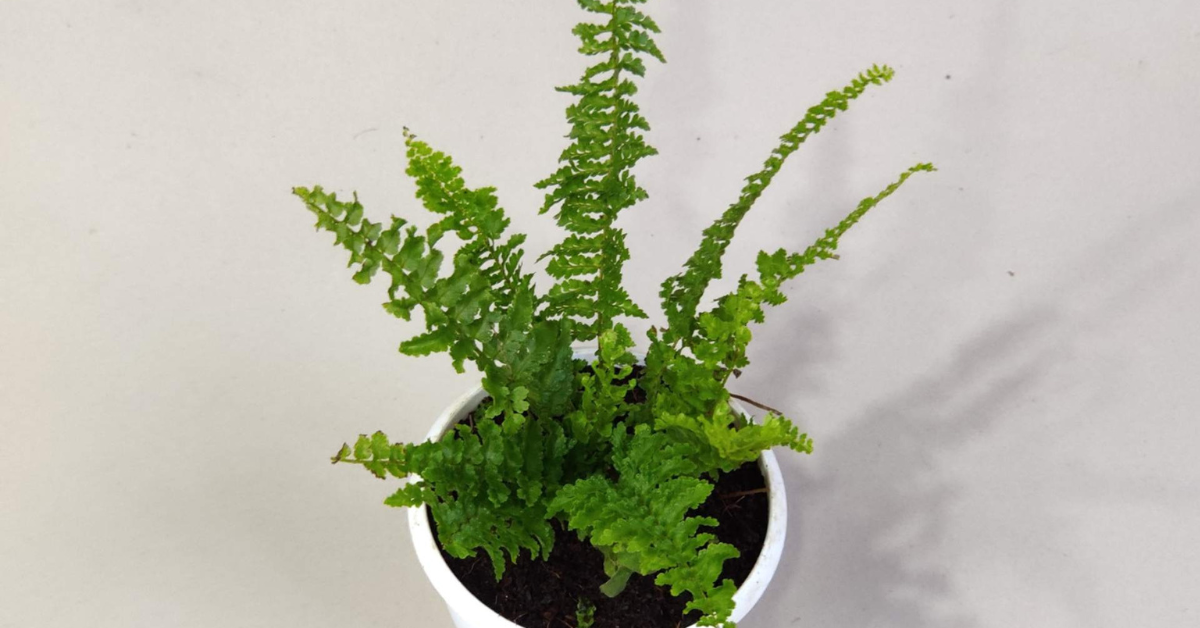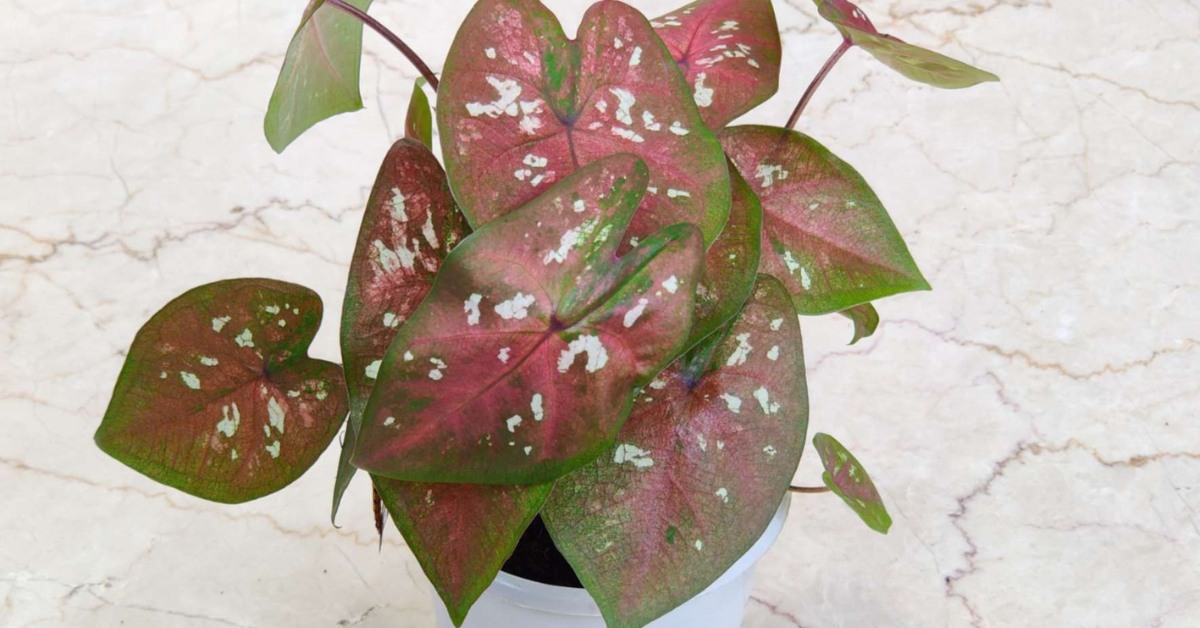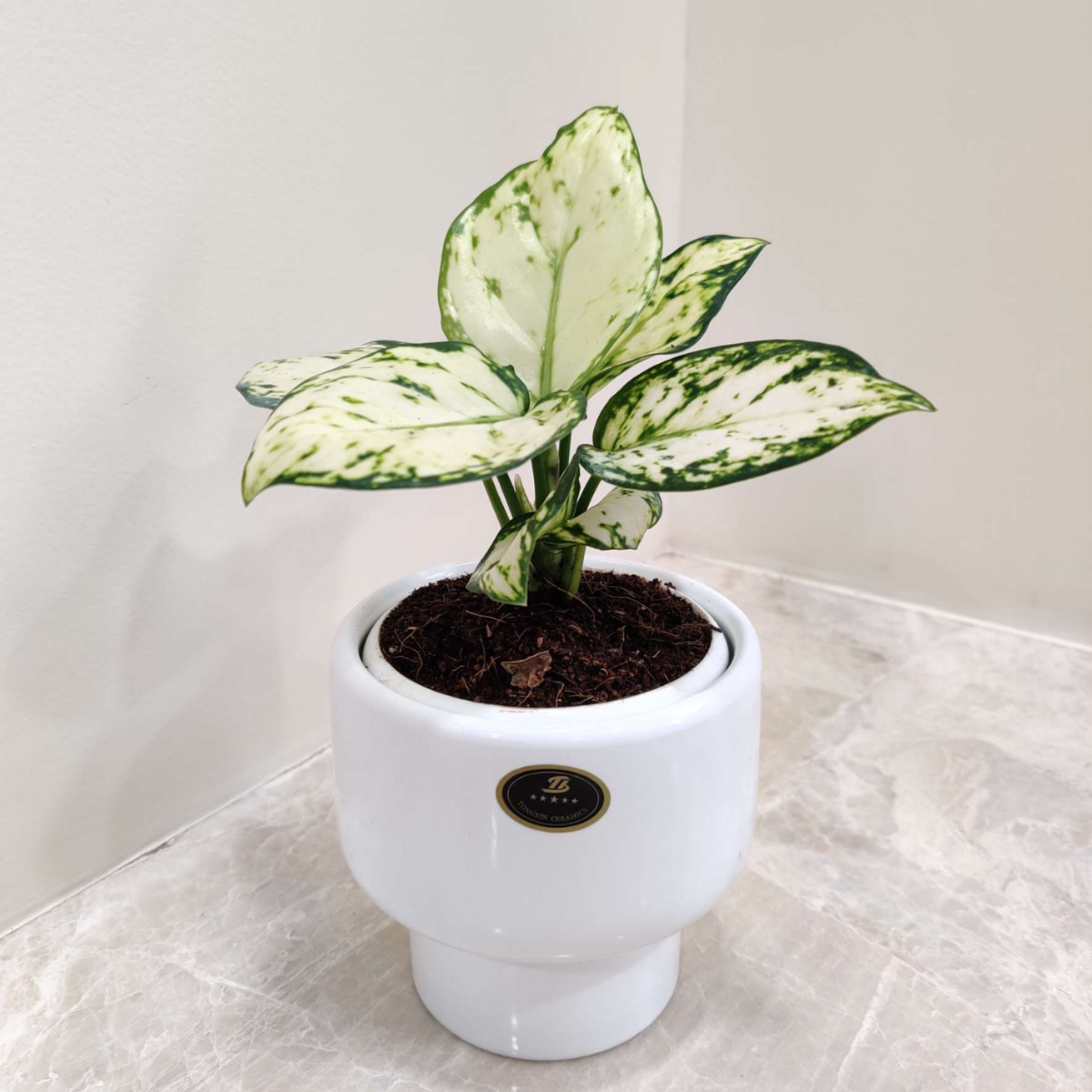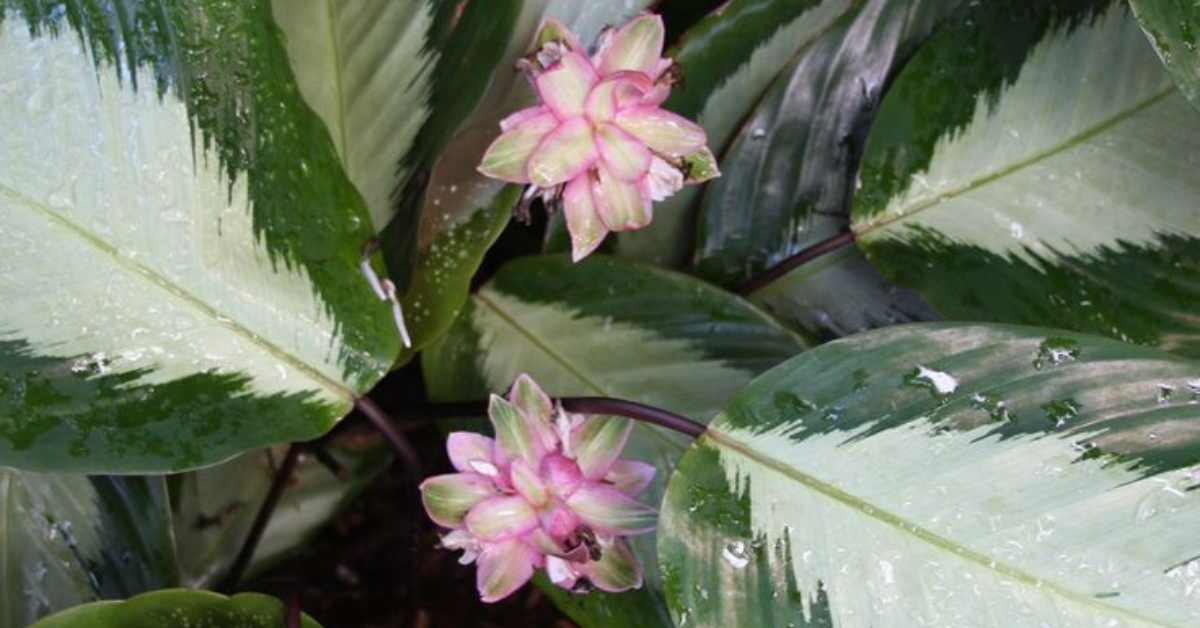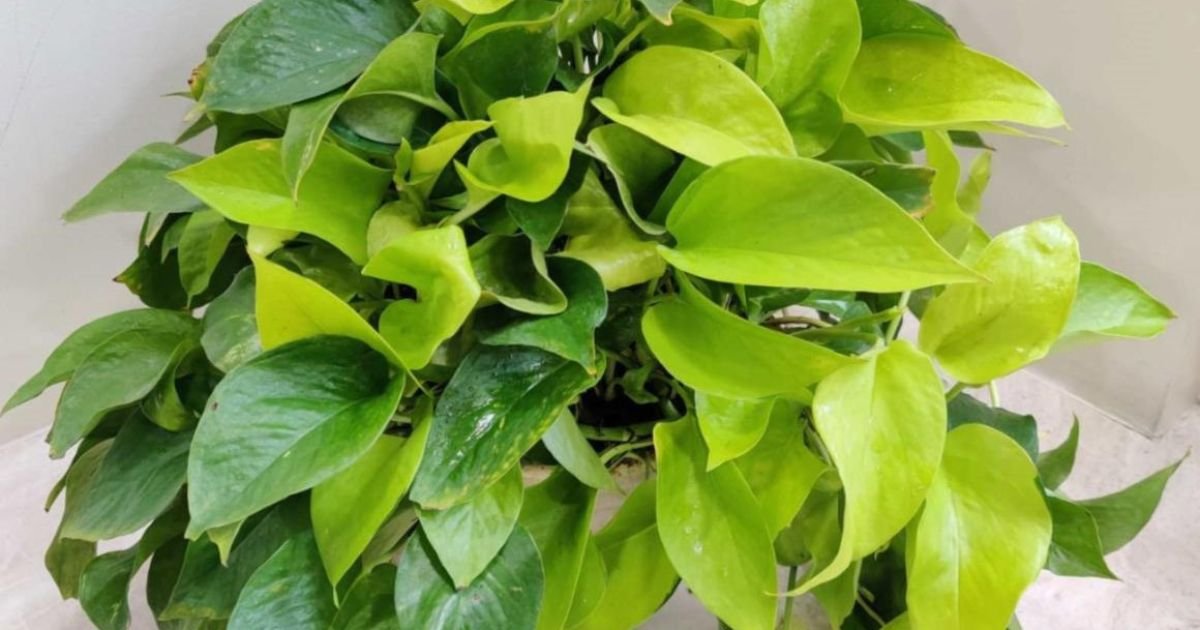The Hoya Kerrii, affectionately nicknamed the Sweetheart Plant, Lucky Heart Plant, or Valentine’s Hoya, is one of the most charming succulents you can add to your indoor garden. With its thick, heart-shaped leaves and low-maintenance care, this plant is a symbol of love and resilience. Popularly sold as single-leaf cuttings during Valentine’s season, it is much more than just a novelty gift—it’s a long-living, air-purifying, and visually captivating houseplant.
In this comprehensive care guide, we’ll explore everything you need to know about Hoya Kerrii, including planting requirements, light, water, propagation techniques, growth stages, common problems, and FAQs. Whether you’re a beginner or a seasoned green thumb, this guide will help your Sweetheart Plant thrive year-round.
What Is Hoya Kerrii?
Botanical Overview:
Common Name: Hoya kerrii, sweetheart hoya, hoya hearts, lucky heart hoya, Valentine’s hoya
Botanical Name: Hoya kerrii
Family: Apocynaceae
Plant Type: Vine, succulent
Mature Size: 13 ft. long
Sun Exposure: Full
Soil Type: Well-draining
Soil pH: Acidic, neutral
Bloom Time: Spring, summer
Native Area: Asia
Belonging to the Apocynaceae family and the Hoya genus (which contains over 500 species), the Hoya Kerrii stands out with its distinct heart-shaped leaves and slow-growing, vining nature. In its native environment, it thrives as an epiphyte or lithophyte—growing on trees or rocks—relying on humidity, air, and filtered sunlight.
Single Leaf vs. Full Plant: What’s the Difference?
Many people first encounter Hoya Kerrii as a single heart-shaped leaf in a small pot, especially during Valentine’s season. While these single leaf cuttings are adorable, they usually don’t grow into full plants.
To understand why, it’s important to know about plant nodes. Hoya Kerrii propagation requires a stem node—the area on a plant stem where roots and shoots grow. A single leaf without this node will remain just a leaf, living for years but never producing new growth.
To grow a full heart-shaped succulent plant, choose a vining Hoya Kerrii with visible stem and leaf nodes or propagate from a stem cutting with at least one growth node.
Indoor Air Quality and Safety
Beyond aesthetics, Hoya Kerrii offers several practical benefits that make it a valuable addition to your indoor plant collection. As an air-purifying succulent, it helps filter harmful toxins such as volatile organic compounds (VOCs) from the air. These chemicals are often emitted from household items like paints, furniture, and cleaning products. By absorbing VOCs, Hoya Kerrii contributes to a fresher and healthier indoor environment, particularly important in modern homes with limited ventilation.
Bonus Benefit: Hoya Kerrii is also a pet-safe houseplant. It is non-toxic to both pets and humans, making it an ideal choice for households with cats, dogs, or small children. While ingesting large quantities may still cause mild digestive discomfort, it generally poses no serious risk if accidentally nibbled. Always supervise pets around any plant.
The heart-shaped leaves of Hoya Kerrii ‘Albomarginata’ are nature’s way of expressing love and friendship, often seen as living symbols of affection. Gifting this plant is like offering someone a piece of your heart, a timeless gesture that strengthens emotional connections and deepens bonds. With its unique shape and enduring beauty, it serves as a powerful reminder of love, loyalty, and heartfelt relationships.
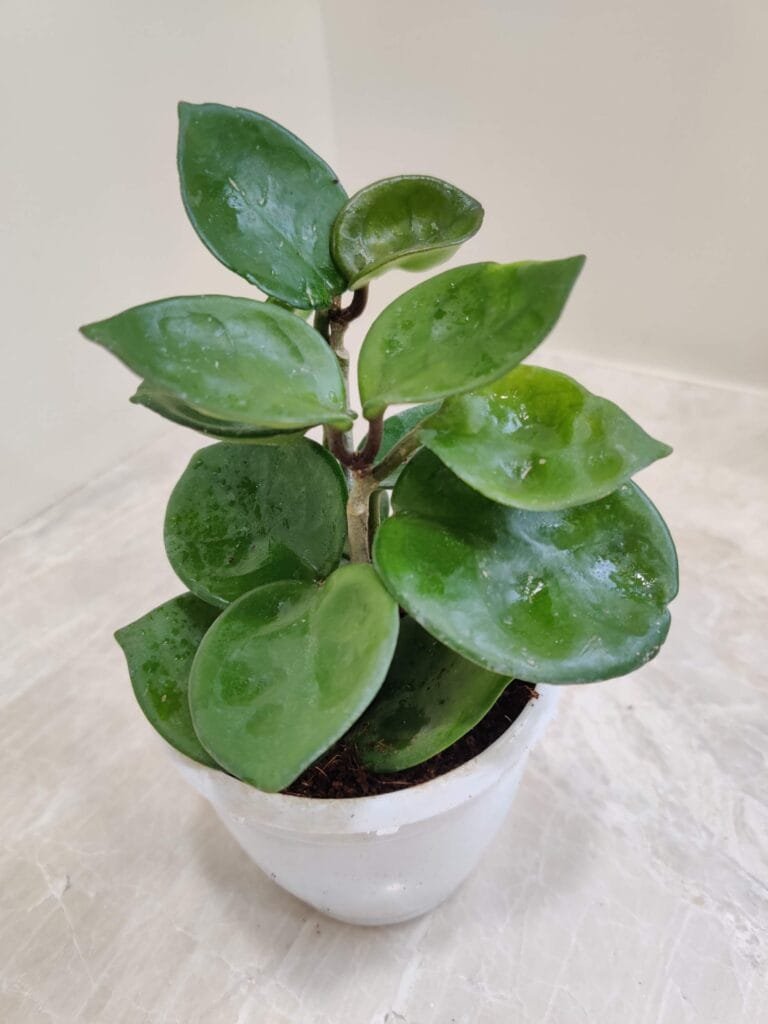

How to Choose the Perfect Hoya Kerrii
Many nurseries sell single-leafed Hoya Kerrii plants, which are adorable but often don’t grow into full vines. For a lush plant with trailing vines:
- Opt for rooted stem cuttings with at least two leaves.
- Avoid single-leaf plants if you want a fully developed vine.
Hoya heart plants thrive in bright, indirect light but should be kept away from direct sunlight to prevent leaf burn. Originating from tropical regions, they flourish in warm, humid environments, with an ideal temperature of around 21°C. For the perfect setup, place your Hoya Kerrii in a well-lit bathroom where it can enjoy natural humidity. To further boost moisture levels, mist the plant regularly with water, ensuring its lush, heart-shaped leaves stay vibrant and healthy.
Caring for Hoya Kerrii is straightforward, but understanding its succulent nature is key.
Ideal Light Conditions for Hoya Kerrii
Light plays a critical role in Hoya Kerrii care, especially if you want it to bloom. Native to forest canopies, the Sweetheart Plant thrives in bright, indirect sunlight.
Best Placement for Hoya Kerrii Light Requirements:
- East or west-facing windows for gentle morning or afternoon sun
- South-facing windows with sheer curtains to filter intense sunlight
- Use grow lights if your indoor lighting is insufficient
Avoid placing your Wax Plant in harsh, direct sun as it can scorch the leaves. Inadequate light can lead to slow growth or lack of flowering. Bright indirect light is also essential for variegated Hoya Kerrii varieties, such as ‘Albomarginata’ or ‘Reverse Variegata’.
Watering Hoya Kerrii: Less Is More
As a drought-resistant succulent, Hoya Kerrii stores water in its thick, fleshy leaves. The key to watering is restraint. Overwatering is the number one killer of this plant.
Watering Schedule for Hoya Kerrii:
- Spring and Summer (Growing Season): Water every 10–14 days when the soil is completely dry
- Fall and Winter (Dormancy): Water once a month or when leaves are soft or wrinkled
Bottom watering is highly recommended. Place your pot in a tray of room-temperature water for 10–15 minutes, allowing it to soak up moisture from the bottom. This method prevents root rot and keeps foliage dry.
Common Signs of Overwatering: Yellow, mushy leaves, and foul-smelling soil
The Perfect Soil for Hoya Kerrii
Soil composition plays a crucial role in maintaining the health of your Hoya Kerrii. Because it is a semi-epiphytic plant, it needs an airy and fast-draining mix.
DIY Soil Mix for Hoya Kerrii:
- 1 part cactus or succulent mix
- 1 part orchid bark
- 1 part perlite or pumice
- Optional: ½ part peat moss or coconut coir for moisture retention
Ideal pots: Choose terracotta or ceramic pots with drainage holes to prevent excess moisture.
Fertilizer and Feeding
Hoya Kerrii care includes periodic feeding during the growing season.
Fertilizing Guidelines:
- Spring and Summer: Feed monthly with a balanced, water-soluble fertilizer (10-10-10 or 20-20-20), diluted to half strength
- Fall and Winter: Stop fertilizing during dormancy
Important: Avoid fertilizing a thirsty plant. Always water first before applying fertilizer to prevent root burn.
Give Your Sweetheart the Right Foundation
From fast-draining succulent soil to balanced plant food, we have everything your Hoya Kerrii needs to thrive.
Temperature and Humidity
Hoya Kerrii is a tropical succulent but adapts well to standard household environments.
Optimal Temperature Range: 60°F to 85°F (15°C to 29°C)
Humidity: Averages of 40–60% are ideal. While it can handle dry air, misting or using a humidifier during dry months can be beneficial.
Avoid cold drafts, air vents, or sudden temperature changes. Never expose it to temperatures below 50°F (10°C).
Propagation: Grow More Sweethearts
Propagating Hoya Kerrii is rewarding but requires patience.
Best Propagation Method: Stem cuttings with at least 2–3 leaf nodes
Steps:
- Take a 4–6 inch stem cutting during spring or summer
- Remove lower leaves
- Dip in rooting hormone (optional)
- Place in water or moist sphagnum moss
- Transplant after 2–3 months when roots are 1–2 inches long
Note: Single-leaf cuttings sold as novelty gifts rarely grow into full plants.
Pruning and Training
Why Prune:
- To control shape
- To remove dead stems
- To encourage bushier growth
When to Prune:
- In spring or early summer
Use clean scissors and avoid removing flower peduncles, as blooms often emerge from the same stalk year after year.
Support vining growth with a moss pole, bamboo hoop, or trellis.
Repotting: When and How
When to Repot:
- Every 2-3 years or when roots are growing out of the drainage holes
- Repot in early spring before the growing season begins
Pot Selection:
- Choose a pot only 1-2 inches larger in diameter
- Hoya Kerrii thrives slightly root-bound, which can encourage flowering
Repot with fresh, airy soil and allow a few weeks for the plant to adjust.
Flowering and Dormancy
Blooming Timeline:
- Most plants flower after 2–3 years of maturity
- Star-shaped white/pink flowers with red centers
- Blooming season: Late spring through summer
To encourage flowering:
- Keep plant root-bound
- Increase light exposure
- Maintain humidity at 50–60%
- Fertilize monthly during growing season
Dormancy:
Occurs in colder months. Reduce watering and withhold fertilizer until spring.
Common Problems and How to Fix Them
| Issue | Symptoms | Solutions |
| Overwatering | Yellow, mushy leaves; root rot | Let soil dry completely; repot if roots are black/mushy |
| Underwatering | Wrinkled, soft leaves | Water thoroughly when soil is dry |
| Lack of Light | Pale leaves; no flowers | Move to brighter indirect light |
| Pests (Mealybugs, Aphids, Spider Mites) | Sticky residue, webbing, distorted leaves | Wipe with neem oil or alcohol; rinse plant thoroughly |
| No Blooming | Mature plant but no flowers | Increase light, humidity, and allow it to become slightly root-bound |
Hoya Kerrii Varieties to Explore
- Hoya Kerrii ‘Splash’: Unique silvery speckled leaves.
- Hoya Kerrii ‘Reverse Variegata’: Creamy center with green edges.
- Hoya Kerrii ‘Albomarginata’: Striking white borders.
- Hoya Kerrii ‘Fuzzy Leaves’: Larger, slightly fuzzy leaves.
Final Thoughts
Hoya Kerrii is more than just a Valentine’s novelty—it’s a hardy, air-purifying succulent that rewards patience with stunning growth and delicate blooms. By mimicking its native habitat and understanding its specific needs, you’ll enjoy a long-lasting, living symbol of love in your home for decades. More than just a succulent,
Hoya Kerrii is a living symbol of love, luck, and lasting connection. Discover the deeper meaning behind the Sweetheart Plant.
Whether you’re expanding your indoor jungle or gifting a plant that speaks the language of the heart, the Hoya Kerrii is a sweetheart in every sense.
FAQs
1: Can a single-leaf Hoya Kerrii grow into a full plant?
Not usually. Unless the cutting includes stem tissue and a node, it will remain a single leaf.
2: How long does Hoya Kerrii live?
With proper care, it can live up to 30 years.
3: Why isn’t my Hoya Kerrii blooming?
Common reasons include insufficient light, lack of fertilization, or the plant is too young. Improve lighting and wait for maturity.
4: Is Hoya Kerrii safe for pets?
Yes, it is non-toxic to cats, dogs, and humans, but large quantities might cause mild stomach upset.
5: How big does Hoya Kerrii get?
In ideal conditions, it can trail or climb up to 2–3 feet indoors; up to 13 feet in the wild.
6: Can I grow Hoya Kerrii outdoors?
Yes, in USDA zones 10–12. Protect it from direct midday sun and frost.
7: What’s the best way to water a Hoya Kerrii?
Bottom watering is ideal. Let the plant soak up what it needs from a tray of water for 10 minutes.
8: How often should I fertilize?
Monthly during spring and summer with diluted houseplant or succulent fertilizer.
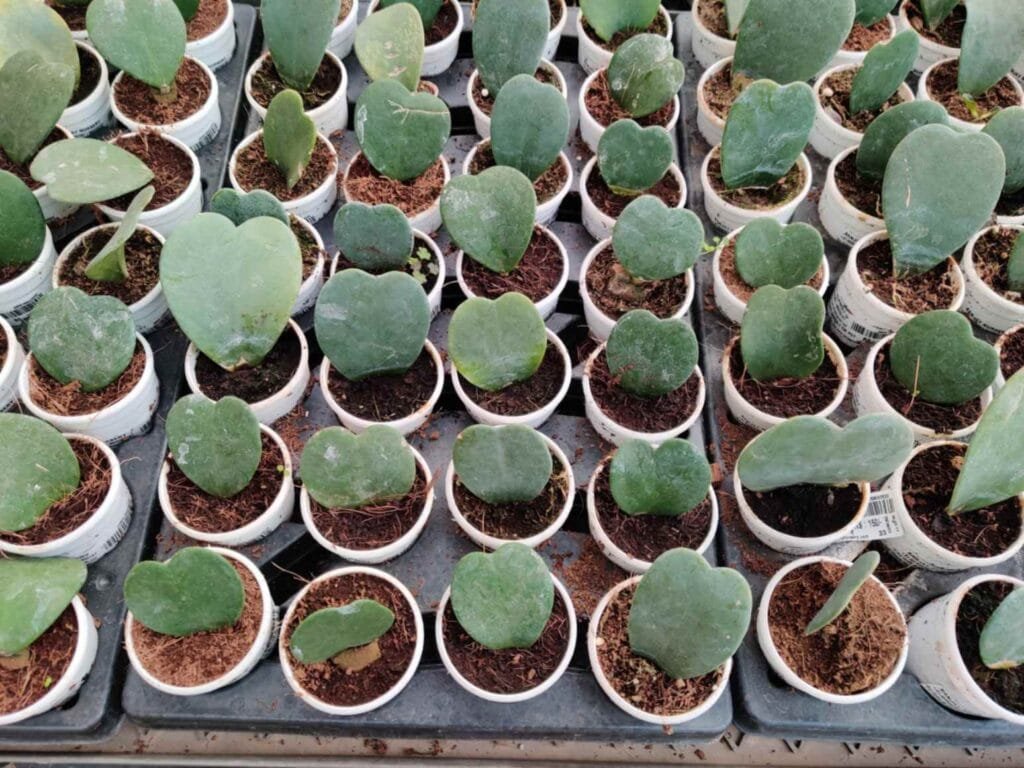
Whether you’re a seasoned plant parent or just starting your green journey, Hoya Kerrii is the perfect reminder that love grows with care. From heart-shaped leaves to easy care and powerful symbolism, it’s more than a plant—it’s a living message.

